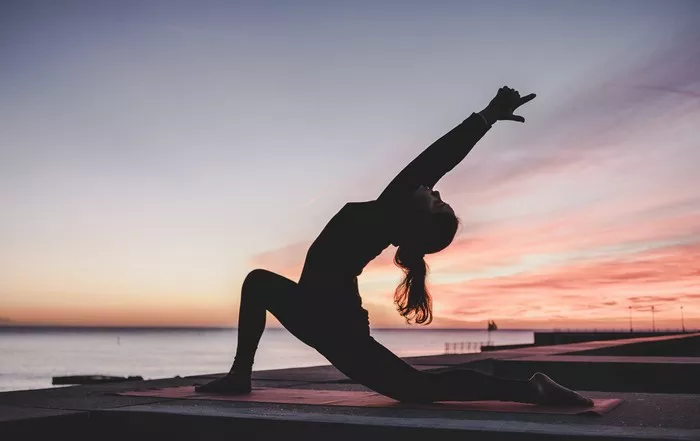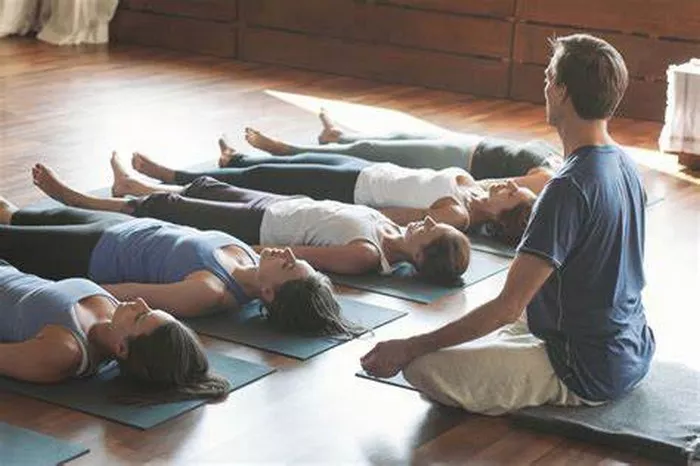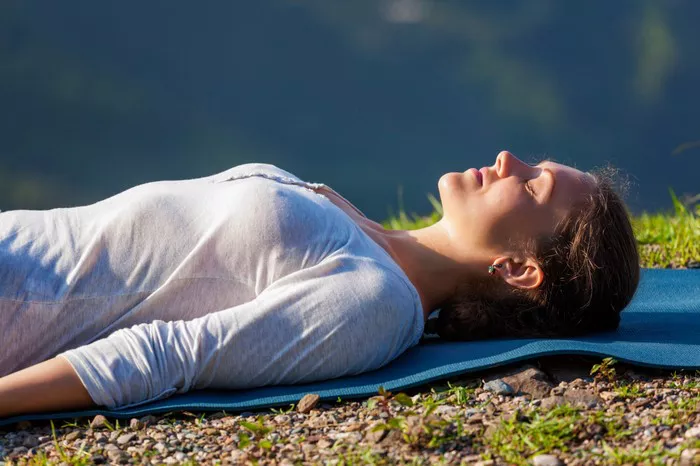In today’s fast-paced world, finding time for comprehensive exercise routines can be challenging. However, the significance of maintaining physical fitness remains paramount for overall well-being. Yoga, a centuries-old practice, offers a holistic approach to fitness, encompassing strength, flexibility, and mental focus. Among various yoga styles, Power Yoga stands out for its dynamic and energizing sequences that efficiently target the entire body. In this article, we delve into the specifics of a 30-minute full body Power Yoga workout, designed to optimize your time and maximize results.
Setting the Stage: Preparing for Power
Before embarking on any physical activity, it’s crucial to create an optimal environment conducive to focus and concentration. Find a quiet, clutter-free space where you can move freely without distractions. Roll out your yoga mat and ensure adequate ventilation to facilitate smooth breathing throughout the session. Dress in comfortable, breathable attire that allows for unrestricted movement. Additionally, have a bottle of water nearby to stay hydrated throughout the workout.
Warm-Up: Igniting the Fire Within (5 minutes)
Every effective workout begins with a proper warm-up to prepare the body for the ensuing exertion. In Power Yoga, the warm-up phase focuses on mobilizing joints, increasing blood flow, and activating core muscles. Perform each of the following movements for approximately one minute:
1. Cat-Cow Stretch: Start on your hands and knees, with wrists directly under shoulders and knees under hips. Inhale, arch your back, and lift your chest and tailbone towards the ceiling (Cow Pose). Exhale, round your spine, tuck your chin to your chest, and draw your belly button towards your spine (Cat Pose). Repeat in a flowing motion.
2. Downward-Facing Dog: From the previous position, lift your hips towards the ceiling, straightening your arms and legs to form an inverted V shape. Press your palms into the mat and engage your core. Hold for 30 seconds, pedaling your feet to stretch the calves and hamstrings.
3. Forward Fold: Step both feet towards your hands at the top of the mat, folding forward from the hips. Let your head and neck relax, and grab opposite elbows with your hands. Allow gravity to deepen the stretch in your hamstrings and lower back.
4. Mountain Pose with Arm Circles: Stand tall at the top of your mat, feet hip-width apart. Inhale, reach your arms overhead, and interlace your fingers. Exhale, circle your arms down and around, opening through the chest and shoulders. Reverse the direction after 30 seconds.
5. Dynamic Lunges: Step your right foot back into a lunge position, lowering your back knee towards the ground while keeping your front knee aligned with your ankle. Push off your back foot and return to standing, switching legs with each repetition. Focus on maintaining a steady rhythm and activating leg muscles.
By the end of the warm-up, you should feel invigorated and mentally prepared to dive into the main sequence of the Power Yoga workout.
Main Sequence: Harnessing Strength and Flexibility (20 minutes)
The core of the 30-minute full body Power Yoga workout comprises a series of dynamic poses that seamlessly flow from one to the next, targeting different muscle groups while promoting balance and coordination. Each posture is held for approximately one minute, with smooth transitions between movements. Focus on synchronizing your breath with each motion, inhaling deeply to expand the chest and exhaling fully to release tension.
1. Sun Salutations (Surya Namaskar): Begin standing at the top of your mat. Inhale, reach your arms overhead, and arch back slightly (Mountain Pose). Exhale, fold forward from the hips, bending your knees if necessary (Forward Fold). Inhale, lengthen your spine and lift halfway, placing your hands on your shins (Half Forward Fold). Exhale, step or jump back into a plank position, lowering down into Chaturanga Dandasana (Low Plank). Inhale, lift your chest and gaze forward into Upward-Facing Dog (Urdhva Mukha Svanasana). Exhale, lift your hips into Downward-Facing Dog (Adho Mukha Svanasana). Hold for a few breaths, then step or jump to the top of your mat and repeat for a total of three rounds.
2. Warrior I (Virabhadrasana I): From Downward-Facing Dog, step your right foot forward between your hands, aligning your front heel with your back heel. Inhale, sweep your arms overhead, keeping your shoulders relaxed away from your ears. Square your hips towards the front of the mat and bend your front knee to a 90-degree angle. Engage your core and gaze up towards your hands. Hold for 30 seconds, then switch sides.
3. Warrior II (Virabhadrasana II): Transition from Warrior I by opening your hips towards the side of the mat, extending your arms parallel to the floor with palms facing down. Keep your front knee bent at a 90-degree angle and gaze over your front hand. Press firmly through the outer edge of your back foot and engage your thigh muscles. Hold for 30 seconds, maintaining steady breathing.
4. Plank Pose: Return to Downward-Facing Dog and then shift forward into a plank position, with shoulders stacked directly above wrists and body forming a straight line from head to heels. Engage your core and press firmly through your palms and heels. Hold for one minute, maintaining a strong, stable position.
5. Chair Pose (Utkatasana): From Plank Pose, step or jump your feet to the top of your mat and bend your knees, lowering your hips as if sitting back into a chair. Sweep your arms overhead, palms facing each other, and engage your core to lengthen your spine. Shift weight into your heels and sink deeper into the pose, keeping knees aligned with ankles. Hold for one minute, feeling the burn in your quadriceps.
6. Tree Pose (Vrksasana): Stand tall at the top of your mat and shift weight onto your left foot. Bend your right knee and place the sole of your right foot on the inner left thigh or calf, avoiding the knee joint. Press your foot into your thigh and your thigh back into your foot, finding balance. Bring your hands to prayer position at your heart or extend them overhead. Hold for 30 seconds, then switch sides.
7. Boat Pose (Navasana): Sit on your mat with knees bent and feet flat on the floor. Lean back slightly, engage your core, and lift your feet off the ground, balancing on your sit bones. Extend your arms parallel to the floor or reach them forward alongside your legs. Keep your chest lifted and spine straight, avoiding rounding in the back. Hold for 30 seconds, feeling the challenge in your abdominal muscles.
8. Bridge Pose (Setu Bandhasana): Lie on your back with knees bent and feet hip-width apart, heels close to your glutes. Press into your feet and lift your hips towards the ceiling, engaging your glutes and hamstrings. Interlace your hands beneath your back and roll your shoulders underneath you, creating a slight backbend. Hold for 30 seconds, breathing deeply into the chest and abdomen.
Cool Down: Restoring Equilibrium (5 minutes)
As the intensity of the Power Yoga workout subsides, it’s essential to transition into a cooldown phase to gradually lower heart rate and promote relaxation. The cooldown sequence focuses on stretching tight muscles, enhancing flexibility, and fostering a sense of calm and balance. Perform each of the following poses for approximately one minute:
1. Seated Forward Fold (Paschimottanasana): Sit on your mat with legs extended in front of you. Inhale, lengthen your spine, and exhale, hinge at the hips to fold forward over your legs. Reach for your feet or shins, keeping your back straight. Relax your neck and shoulders and breathe deeply into the stretch in your hamstrings and lower back.
2. Pigeon Pose (Eka Pada Rajakapotasana): From a seated position, bend your right knee and bring it towards your right wrist, placing the shin parallel to the top of the mat. Extend your left leg behind you, toes pointing away. Square your hips towards the front of the mat and fold forward over your bent leg, resting on your forearms or forehead. Hold for 30 seconds, then switch sides.
3. Supine Spinal Twist: Lie on your back with knees bent and feet flat on the floor. Extend your arms out to the sides in line with your shoulders. Inhale, then exhale, lower both knees to the right side of your body, keeping your shoulders grounded. Gaze towards your left hand and breathe deeply into the twist. Hold for 30 seconds, then switch sides.
4. Corpse Pose (Savasana): Conclude your Power Yoga workout by lying flat on your back with arms by your sides and palms facing up. Close your eyes and allow your body to completely relax into the mat. Focus on releasing tension from head to toe, surrendering to the present moment. Remain in Savasana for at least two minutes, soaking in the benefits of your practice.
Conclusion
In just 30 minutes, the full body Power Yoga workout offers a comprehensive blend of strength, flexibility, and mindfulness, leaving you feeling rejuvenated and empowered. By incorporating dynamic sequences, breath awareness, and intentional movement, you can tap into your full potential and cultivate a deeper connection between mind, body, and spirit. Whether you’re a seasoned yogi or a novice practitioner, dedicating time to this invigorating practice can yield profound physical and mental benefits. Commit to your journey of self-discovery and transformation, one breath at a time.
Remember, consistency is key to realizing the transformative effects of yoga. As you integrate this 30-minute Power Yoga routine into your daily life, observe how it positively influences your overall well-being, both on and off the mat. Embrace the journey with an open heart and a willingness to explore your limitless potential. Namaste.






















